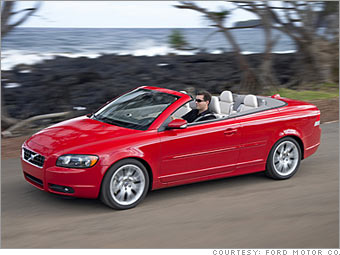Both Volvo and Mazda share components with other Ford vehicles and, just importantly, both bring specific expertise to the company. Ford purchased Volvo and took a controlling interest in Mazda in 1999.
Volvo's main selling point is safety, as it has been for decades. This is in spite of the fact there are cars of all stripes today that can claim to be as safe as a Volvo in a wreck.
To keep ahead of the pace, at least as far as market perception is concerned, Volvo is touting crash avoidance technologies on its newer cars such as a system on the new Volvo S80 that uses radar to warn the driver of an impending collision. Of course, Volvo still designs its cars to get top crash-test scores and more importantly, Volvo insists, to protect occupants in complex real-world accidents.
Nonetheless, the competition in safety is heating up. So Volvo needed to move beyond the vault-on-wheels look it had carried for so long. Volvos needed to be sexy as well as safe.
Before becoming head of design for Ford's U.S. brands, Peter Horbury had helped Volvo get out the design box it had become trapped in. Horbury introduced shoulders, a near-horizontal outcropping just below the windows. The shoulder gives Volvos a strong-bodied look while allowing the rest of the body to be more rounded. Volvos no longer look like appliances. The cars and SUVs retain a strongly Scandinavian design sense, with an emphasis on simple unadorned lines, as seen in the sporty C70 convertible.
Under Mark Fields, now in charge of Ford's U.S. brands, Mazda solidified its image for making cars that are fun and exciting to drive. They're also fuel-efficient and, perhaps most importantly, Japanese in a market that's increasingly turning to Japanese cars that are perceived as having better quality. (Ford, Lincoln and Mercury outranked Mazda by at least 9 places in the most recent J.D. Power Vehicle Dependability Survey, however.)
Mazda's acclaimed front-wheel-drive engineering can be found on other Ford vehicles like the Volvo C70, Ford Fusion and Ford Edge.

